Cruise ships have a significant environmental impact, releasing pollutants into the air and oceans. In fact, just one large cruise ship can emit as much air pollution as thousands of cars per day, especially when it comes to sulphur oxides and particulate matter.
These ships also release wastewater packed with harmful chemicals and create noise that messes with marine life. Their powerful propellers can wreck coral reefs and bring in invasive species through ballast water.
But there’s a silver lining – the industry is making some progress with cleaner fuels, better waste management, and energy-saving practices.
While the cruise industry is working to reduce its environmental footprint, passenger safety remains a top priority. For more information on the safety measures and protocols in place on cruise ships, check out our in-depth guide on cruise safety.

Actions cruise ships are taking to combat their environmental impact:
- Using cleaner fuels like liquefied natural gas (LNG) to cut down on harmful emissions.
- Upgrading wastewater treatment so they don’t dump dirty water into the oceans.
- Installing scrubbers to reduce sulfur and other nasty stuff from their exhaust.
- Plugging into shore power while in port to avoid running the engines and creating air pollution.
- Improving energy efficiency, with things like LED lights and better ship designs to save fuel.
- Cutting down on waste by promoting recycling and reducing what they throw away.
- Protecting marine life by treating ballast water and keeping noise pollution in check.
- Building hybrid and electric ships for a cleaner future.
- Teaming up with eco-organizations to create more sustainable tourism.
- Ditching single-use plastics to reduce plastic waste.
- Offering eco-friendly shore excursions that support local environments.
- Building ships in greener ways to reduce the impact of construction.
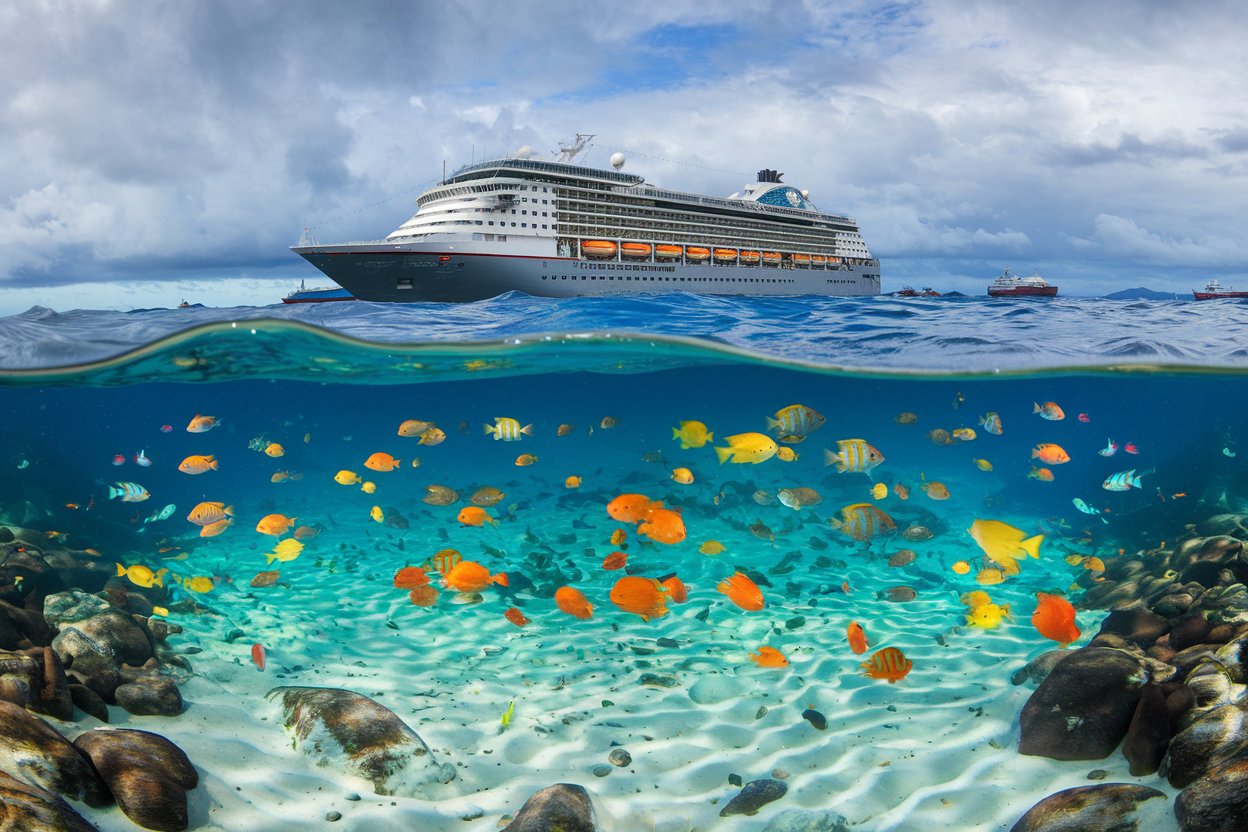
Introduction to the Environmental Concerns of Cruising
When you think about cruising, it’s easy to imagine all the fancy amenities and exotic places you could visit, but there’s a lot more going on below the surface that raises some environmental eyebrows.
One of the biggest worries is how cruise ships affect marine ecosystems. They often dump wastewater, which can have nasty chemicals, straight into the ocean. This can harm sea life and mess with fragile underwater habitats.
On top of that, these ships produce huge amounts of solid waste, including plastic, which adds to ocean pollution. Plus, the noise from these floating giants can disrupt marine animals, especially those that rely on sound to navigate.
And let’s not forget about the massive fuel consumption, which further harms the environment.
It’s important to know about these issues if you’re thinking about making greener choices for your next cruise.

Air Pollution and Carbon Emissions from Cruise Ships
Even though they look appealing, cruise ships are well-known for causing a lot of air pollution and carbon emissions. When you hop on a cruise, you’re adding to the release of huge amounts of sulphur oxides, nitrogen oxides, and carbon dioxide. These pollutants mess with air quality and contribute significantly to climate change.
Here’s a quick comparison of emissions from just one cruise ship:
| Pollutant | Annual Emissions (tons) | Equivalent Cars (annually) |
|---|---|---|
| Sulphur Oxides (SOx) | 520 | 376,000 |
| Nitrogen Oxides (NOx) | 450 | 80,000 |
| Carbon Dioxide (CO2) | 21,000 | 4,000,000 |
Looking at these figures, it’s pretty obvious that cruising has a big impact on the environment, particularly when it comes to air quality and carbon footprint.
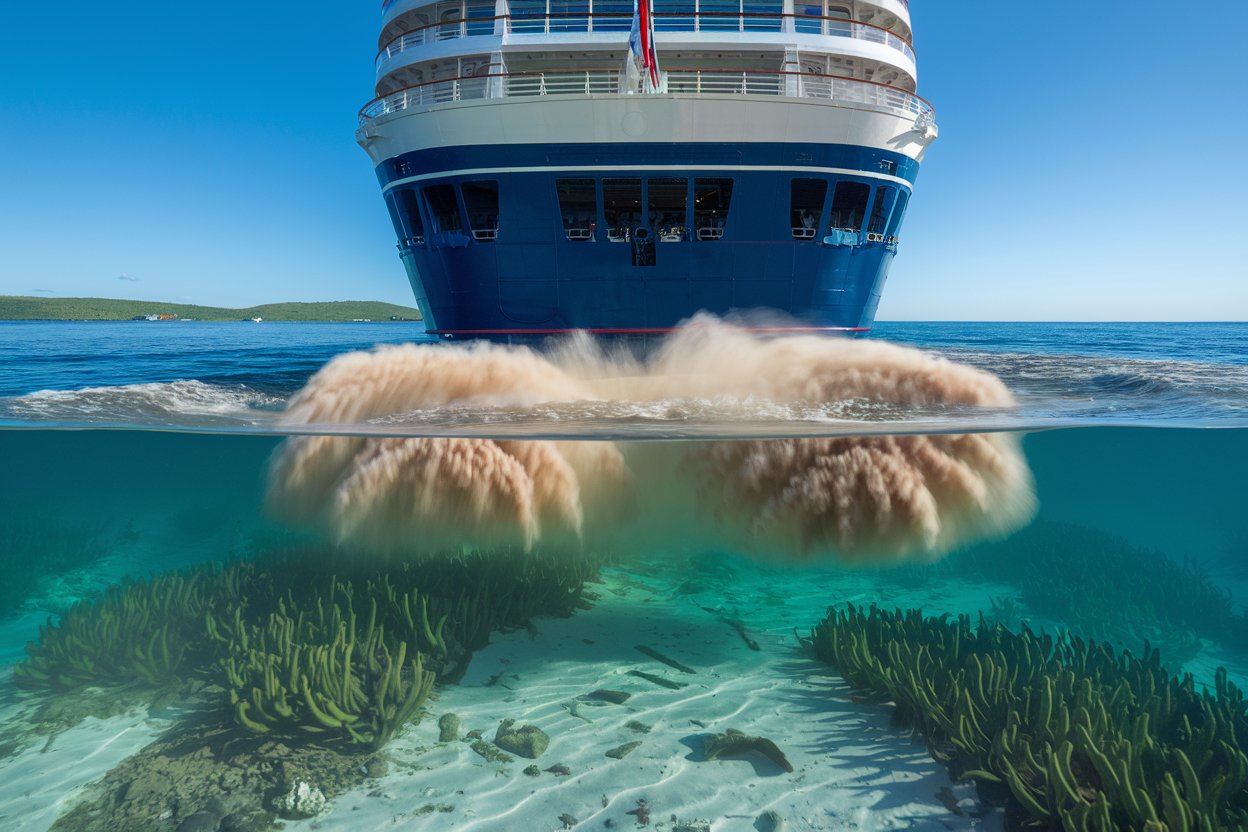
Impact on Marine Ecosystems and Wildlife
Cruising isn’t just about the fun and sun; it also has a serious impact on our oceans and the creatures living in them. Those huge ships and their powerful propellers stir up the seabed, which can really mess with coral reefs and other vital habitats. This kind of disruption can lead to fewer fish and other marine species, which isn’t good news for biodiversity.
On top of that, the noise from engines and activities on board can confuse marine animals like dolphins and whales, messing with how they communicate and migrate.
Plus, there’s the risk of invasive species hitching a ride in ballast water, which can be a threat to local ecosystems.
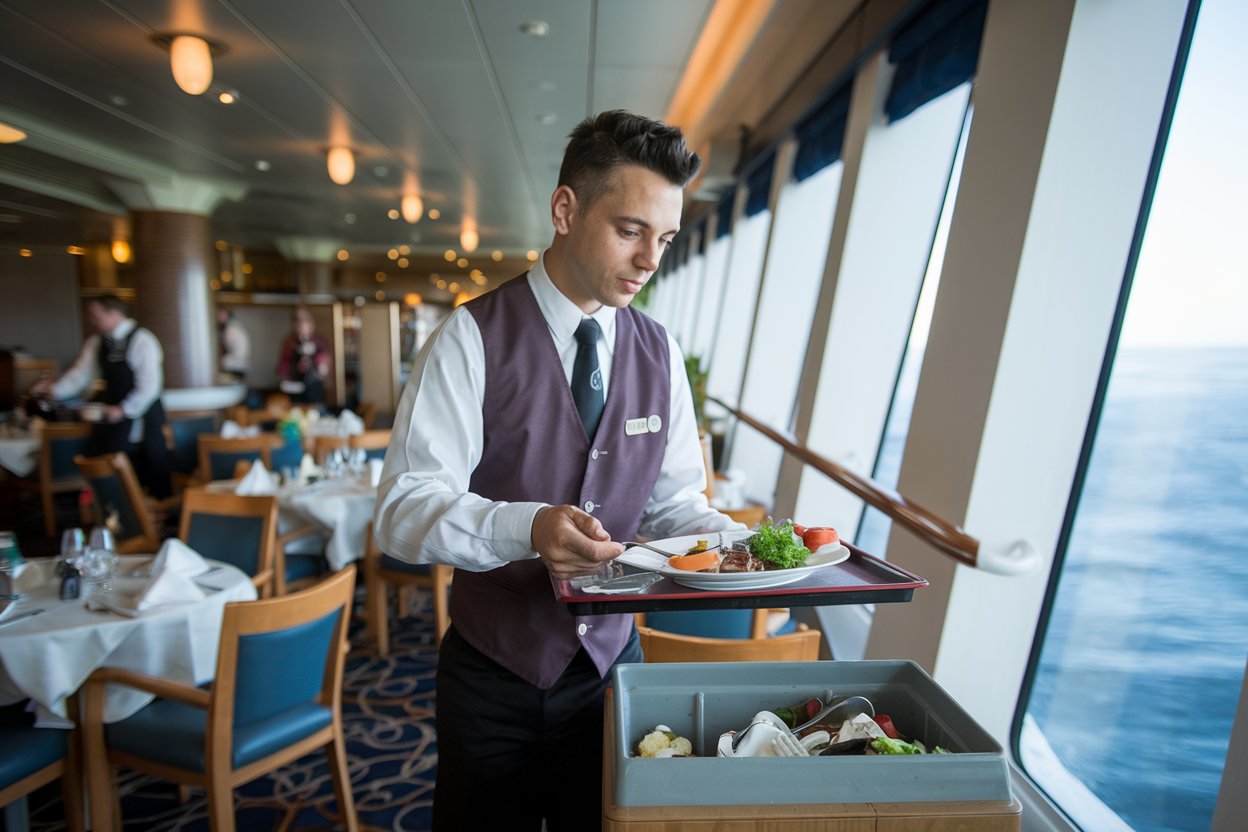
Waste Management: Challenges and Solutions
Managing waste on cruise ships can be a right headache, but it also opens up some cool ways to tackle the problem.
You’ve got all sorts of rubbish to deal with, from leftover food to plastics, which gets tricky with the limited space on board.
But by using smart waste sorting and recycling systems, you can really cut down on the environmental mess.
Some cruise lines are even using incinerators to shrink the amount of waste and turning organic scraps into energy.
Plus, compactors can help save space, and training the crew properly can make a big difference in how waste is handled.
Old and new waste management practices on cruise ships:
| Aspect | Old Practices | New Practices |
|---|---|---|
| Sewage Disposal | Direct dumping of untreated or minimally treated sewage into the ocean. | Advanced wastewater treatment systems that purify sewage before release or store it until reaching port. |
| Solid Waste Disposal | Incineration at sea or dumping non-biodegradable waste overboard. | Comprehensive recycling programs and proper waste storage for disposal at designated ports. |
| Food Waste | Discharging food waste directly into the sea (within certain regulations). | Food waste is now processed using advanced systems (like grinders or pulpers) and discharged only in designated areas far from land or treated onboard. |
| Plastic Use | Heavy reliance on single-use plastics onboard. | Reduction of single-use plastics, replaced by reusable or biodegradable alternatives. |
| Hazardous Waste | Poorly regulated handling and disposal of hazardous materials like chemicals and oils. | Strict regulations for the containment, treatment, and safe disposal of hazardous waste through specialized facilities. |
| Ballast Water | Dumping ballast water without treatment, risking the spread of invasive species. | Ballast water is treated to remove invasive species before being released. |
| Energy Efficiency | Little focus on energy conservation, resulting in excessive fuel consumption. | Ships are now equipped with energy-efficient systems and are transitioning to cleaner fuels like LNG. |

Water Pollution and Ocean Health
When you’re on a cruise, it’s easy to forget about the huge amount of waste that gets produced.
But the problem of water pollution and how it affects our oceans is something we should definitely think about. If waste isn’t handled properly, it can really mess up marine life and ecosystems.
Here are three main ways that cruises contribute to water pollution:
- Graywater: This is the wastewater from sinks, showers, and laundry, and it can have some nasty chemicals in it.
- Blackwater: This is sewage that gets dumped, which can bring in harmful pathogens and nutrients that throw marine environments out of balance.
- Ballast Water: Ships take in and release ballast water, which can spread invasive species to new areas.
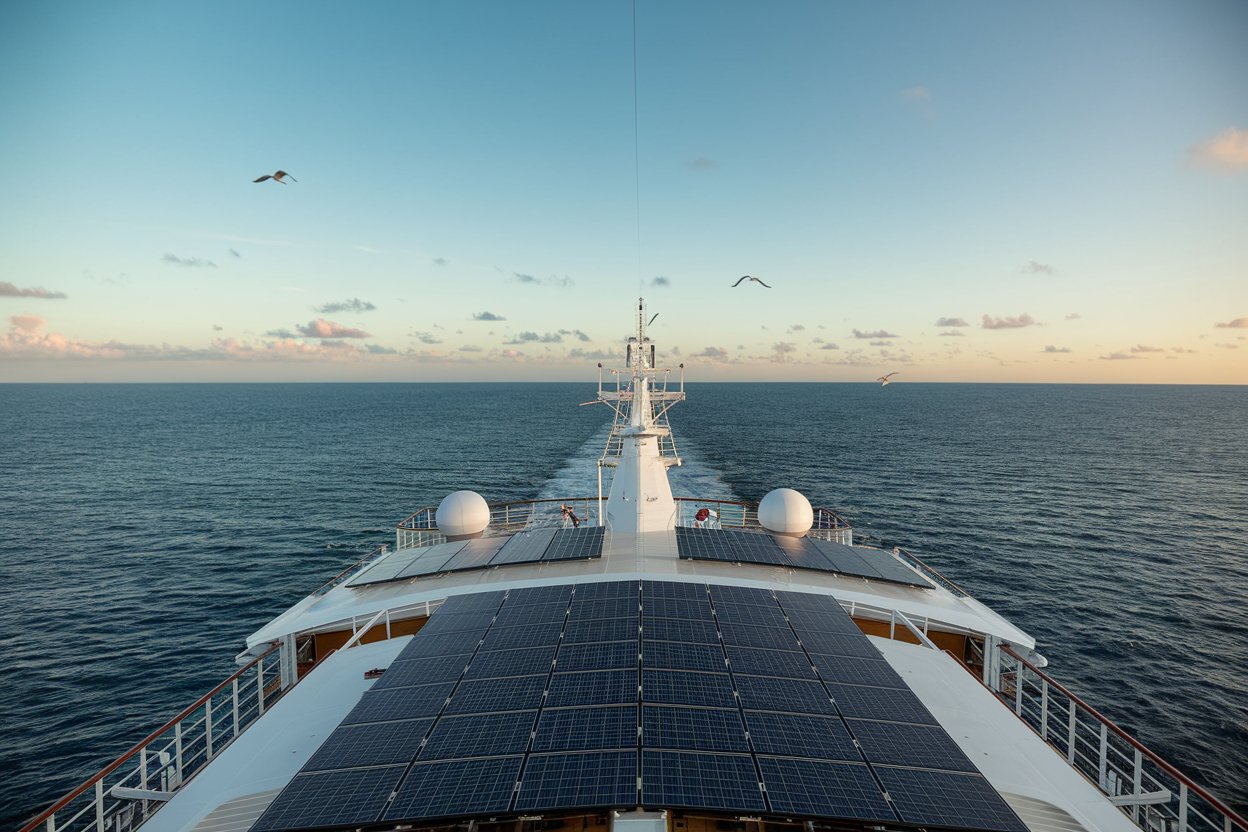
Sustainability Efforts in the Cruise Industry
The cruise industry is becoming more aware of its impact on the environment and is starting to take some meaningful steps towards being more sustainable. Nowadays, many cruise lines are switching to cleaner fuels like LNG (liquefied natural gas), which helps cut down on emissions.
Ships are also being fitted with advanced systems to treat wastewater, helping to keep our oceans cleaner. Energy efficiency is another big focus; newer ships come with LED lights, solar panels, and better hull designs to help save on fuel.
Plus, a lot of companies are aiming for zero waste by boosting recycling efforts and cutting back on single-use plastics. Working alongside environmental groups helps make sure these practices are up to scratch.
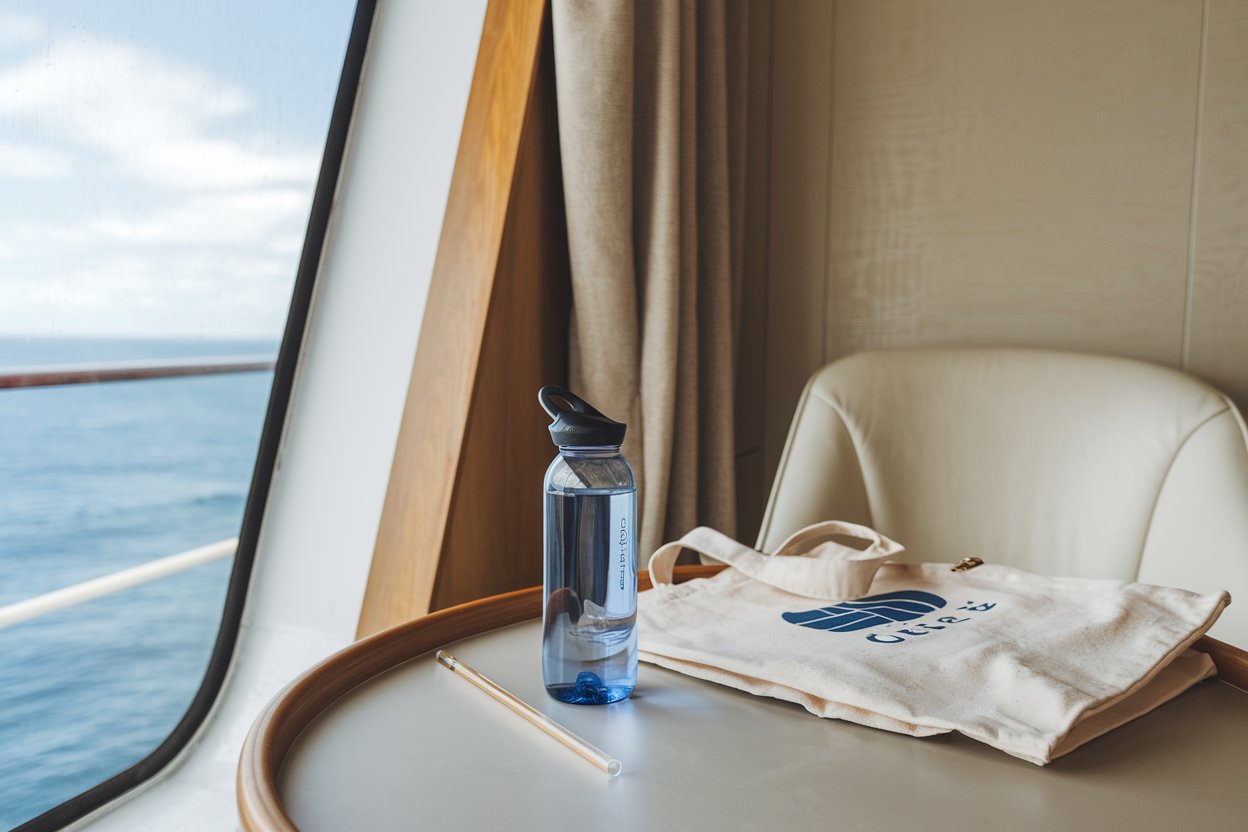
What Can You Do to Minimise Their Impact?
Everyone can do their bit to lessen their environmental impact when cruising. There are a few simple things you can do to help out.
Here’s a list of the things you can do to help:
- Pack eco-friendly products, like reusable water bottles, straws, and tote bags to cut down on single-use plastics.
- Use the ship’s recycling bins to properly dispose of waste and help with recycling efforts.
- Choose shore excursions that promote sustainability, such as eco-tours or excursions that support local conservation efforts.
- Limit water and energy use by taking shorter showers and turning off lights or air conditioning when leaving the cabin.
- Avoid unnecessary towel and linen changes by opting into the ship’s reuse programs.
- Choose cruise lines committed to sustainability, like those using cleaner fuels or advanced waste management systems.
- Bring reef-safe sunscreen to help protect marine ecosystems while swimming or snorkelling.
- Minimise food waste by only taking what you can eat at the buffet or dining rooms.
- Support local businesses during port stops by buying from sustainable and eco-friendly vendors.
- Educate yourself about the ship’s environmental policies and follow guidelines to reduce your footprint onboard.
Get honest cruise advice that puts your interests first.
Jo and the About2Cruise team provide expert guidance to help you choose cruises based on reality, not marketing promises. Find out more about us.
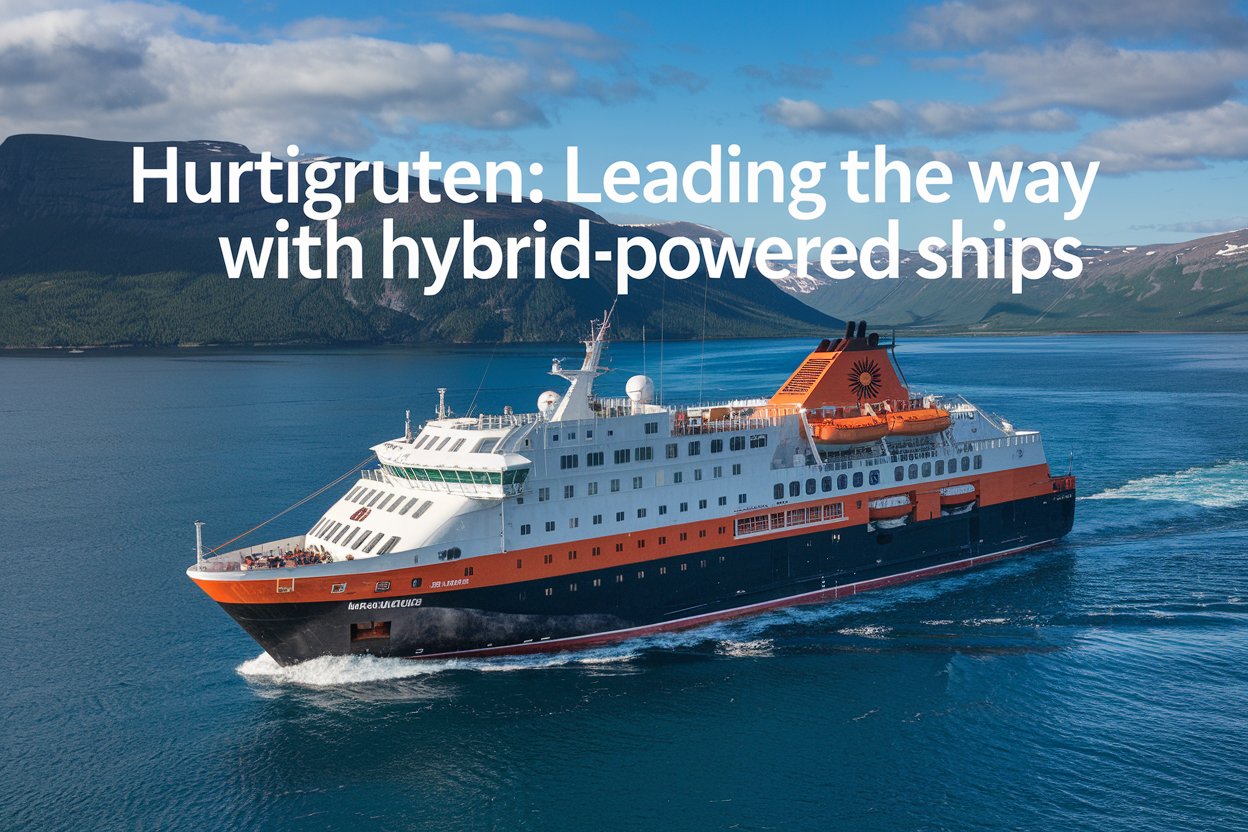
Which Cruise Line is Doing The Most?
Once you’ve done your bit to cut down on your personal impact, it’s a good idea to see which cruise line is really stepping up in the sustainability game.
- Hurtigruten:
- Leading the way with hybrid electric-powered ships.
- Aiming to cut CO2 emissions by 50% by 2030.
- Actively reducing single-use plastics and improving fuel efficiency.
- MSC Cruises:
- Targeting carbon neutrality by 2050.
- Investing in LNG-powered ships and other energy-efficient technologies.
- Developing innovative wastewater treatment and recycling systems.
- Royal Caribbean:
- Advanced wastewater purification systems onboard.
- Energy-efficient ship designs and solar power on some ships.
- Committed to cutting carbon emissions by investing in cleaner technologies.
- Carnival Corporation:
- Leading the “Green Cruising” initiative, focusing on LNG-powered ships.
- Pushing for improved fuel efficiency across the fleet.
- Actively working on reducing onboard waste and promoting recycling.
These cruise lines are setting the standard for sustainability in the industry with significant eco-friendly initiatives.

Looking Ahead: The Future of Green Cruising
How’s the cruising scene going to change to meet those stricter environmental rules? Well, we’re in for some pretty exciting updates that’ll help cut down the impact on our planet. Cruise lines are pouring money into green tech.Here’s what to look forward to:
- Cleaner Fuels: Ships will start using more LNG (liquefied natural gas) and other fuels that are kinder to the planet.
- Better Waste Management: Upgraded systems will recycle and reduce waste, which means less rubbish ending up in our oceans.
- Energy Efficiency: New ships will come with solar panels and wind turbines to make use of renewable energy.
These changes won’t just be great for the environment; they’ll also make your time on board even better by promoting sustainability. As you head off on your future cruises, you’ll see how the industry is stepping up its green game. Embrace the shift; it’s a win for everyone involved.

Frequently Asked Questions
How Do Cruise Ships Affect Local Communities Economically and Socially?
Cruise ships can really give local economies a boost by bringing in tourists who spend money and create jobs. On the social side, they mix up different cultures, which can lead to more community involvement and cultural exchanges. But it’s not all good news; they can also strain local resources and put pressure on infrastructure.
Are There Any Regulations Governing Cruise Ship Environmental Practices?
Absolutely, there are rules around how cruise ships handle their environmental impact. You’ve got international guidelines like MARPOL, along with local laws that make sure ships deal with waste, emissions, and water discharge properly. The goal is to keep their impact on the environment as low as possible.
What Are the Health Impacts on Passengers From Cruise Ship Pollution?
You might face some breathing problems and allergies thanks to pollution on cruise ships. The air quality onboard can take a hit from emissions, which could lead to headaches, feeling dizzy, and making any existing health issues worse. It’s a good idea to think about these health risks before you set sail.
How Does the Size of a Cruise Ship Influence Its Environmental Footprint?
When you think about how big a cruise ship is, it’s pretty clear that the larger ones create more waste and emissions. They guzzle more fuel, which makes their environmental footprint even bigger. So, generally speaking, the bigger the ship, the greater the impact it has on the environment.
Do Cruise Ships Use Renewable Energy Sources?
You might be curious if cruise ships use renewable energy sources. Most of them don’t, as they mostly stick to heavy fuel oil and diesel. However, a few ships are starting to look into cleaner options like liquefied natural gas and solar power.
Get honest cruise advice that puts your interests first.
Jo and the About2Cruise team provide expert guidance to help you choose cruises based on reality, not marketing promises. Find out more about us.
